#late Renaissance
Text

Christ Washing the Disciples' Feet, Benvenuto Tisi, ca. 1520-1525
#Maundy Thursday#Holy Week#liturgical calendar#art#art history#Benvenuto Tisi#religious art#Biblical art#Christian art#Christianity#Catholicism#New Testament#Gospels#Renaissance#Renaissance art#Italian Renaissance#Late Renaissance#Mannerism#Italian Mannerism#Cinquecento#Italian art#16th century art#oil on panel#National Gallery of Art
93 notes
·
View notes
Text
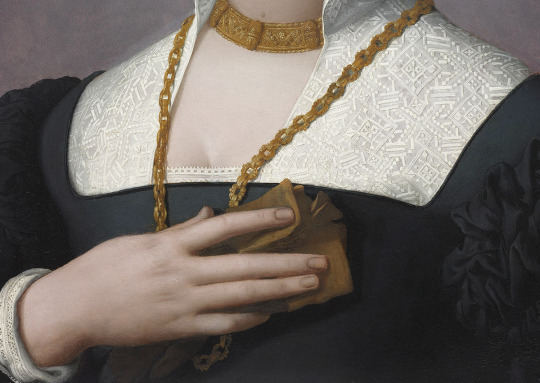
Agnolo Bronzino (1503–1572), Portrait of a Woman (detail)
#art#art detail#details#16th century#16th century art#italian art#mannerism#late renaissance#hands#creations
108 notes
·
View notes
Text



Details, suicide of Lucretia by various artists, (1), (2), (3)
#aesthetic#art#art history#paintings#old paintings#16th century#17th century#renaissance#late renaissance#lucretia#oil painting#art detail#dark academia#art academia#darkest academia#daggers#art movement#art details#art movements
660 notes
·
View notes
Text
youtube
Gioseffo Guami (1542-1611) - Canzon la Bastina ·
Amsterdam Loeki Stardust Quartet
12 notes
·
View notes
Text
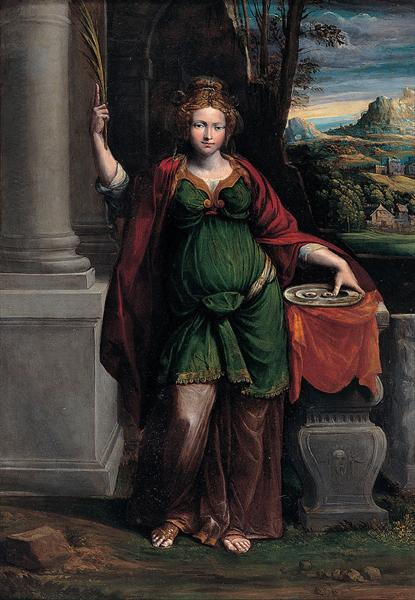
Benvenuto Tisi (1491-1559)
"Saint Lucy" (1535)
Mannerism
#paintings#art#artwork#religious painting#female portrait#benvenuto tisi#fine art#mannerism#mannerist#italian artist#late renaissance#portrait of a woman#christianity#green#red#eyes#1530s#early 1500s#early 16th century#martyr
66 notes
·
View notes
Text

Domenico Tintoretto, Penitent Magdalene, 1602
#domenico tintoretto#tintoretto#penitent magdalene#1590s#1600s#late renaissance#mannerism#Capitoline Museums#religious#art history#paintings#art
223 notes
·
View notes
Text

Titian (Italian, 1490–1576) • Titian’s Mistress • 1550–60 (shown after conservation) • Apsley House, London
#art#painting#art history#late renaissance#fine art#portrait#italian renaissance#italian artist#titian#16th century art
6 notes
·
View notes
Photo

Giovanni Battista Moroni, The Sculptor Alessandro Vittoria, ca. 1552/53, oil on canvas, 87.5 x 70 cm, Kunsthistorisches Museum, Vienna
Source: Wikimedia Commons
#art#painting#giovanni battista moroni#giovan battista moroni#giambattista moroni#portrait#artist portrait#artist's portrait#alessandro vittoria#sculptor#renaissance portrait#16th century portrait#16th century#16th century painting#16th century art#16th century menswear#renaissance#late renaissance#italian renaissance#renaissance clothing#renaissance art#renaissance painting#young man#artists in art#1550s
28 notes
·
View notes
Photo

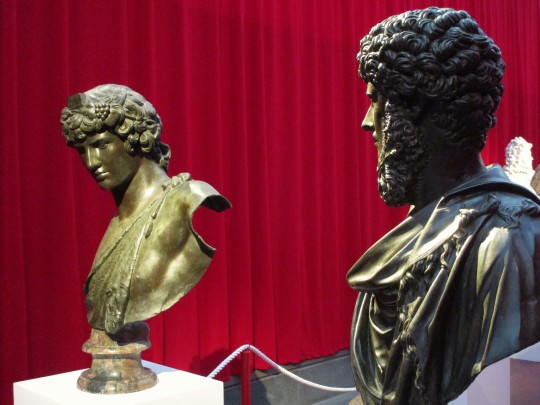

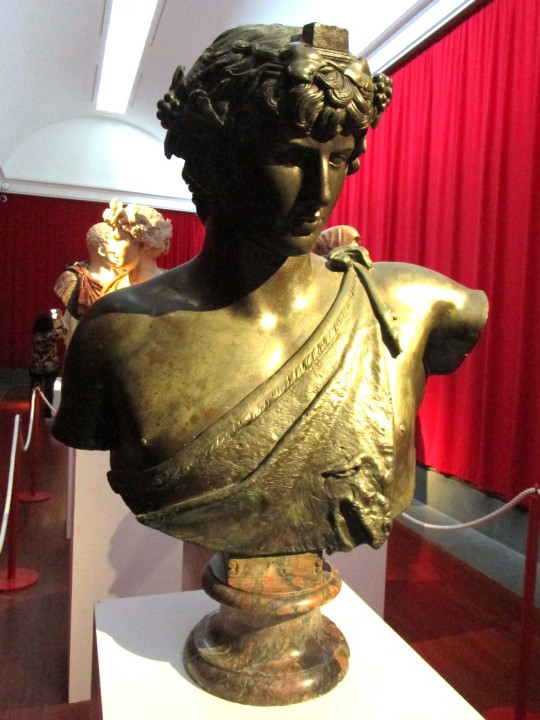
Lucius Verus cruising Antinous at the Museo di Capodimonte in Naples
Two bronze busts by Guglielmo della Porta, 1575
25 notes
·
View notes
Text

A public performance of a comedy; three actors (two masked) on stage, among the audience are a pickpocket and two young boys fighting. School of Baccio del Bianco, c. 1604-1656. (British Museum)
2 notes
·
View notes
Photo



Giulio Romano, La Caduta dei Giganti at Palazzo Te (Mantua, Lombardia), 1525-35
#giulio romano#painting#fresco#wall painting#italian painting#La Caduta dei Giganti#The fall of the giants#palazzo del te#palazzo te#greek gods#roman gods#classic mythology#italy#renaissance#xvi#late renaissance#mannerism
36 notes
·
View notes
Text

Mystic Marriage of St. Catherine, Sofonisba Anguissola, 1588
#art#art history#Sofonisba Anguissola#female artists#religious art#Christian art#Christianity#Catholicism#St. Catherine of Alexandria#Renaissance#Renaissance art#Italian Renaissance#Late Renaissance#Cinquecento#Italian art#16th century art#oil on canvas#Bilbao Fine Arts Museum
128 notes
·
View notes
Text
"Miserere mei, Deus” by Gregorio Allegri
Gregorio Allegri (c. 1582-1652) was a late Renaissance composer, best remembered for his ‘Miserere’ for two choirs. Allegri began singing in San Luigi dei Francesi before joining the Sistine Choir in 1629. Renaissance music was built upon plainchants, and is characterised by polyphony, imitation, motets, superimpositions, and overlapping cadences that convey flow, expressiveness, and devotion. ‘Miserere’ exemplifies Renaissance polyphony—one choir of five voices sings a fauxbourdon of a plainchant for the Tonus peregrinus, while the other choir of four voices supplies with elaborations and cadenzas, forming a 9-part polyphony.
youtube
Sistine Codex of 1661
‘Miserere’ is an acapella performed exclusively during Holy Week in the Sistine Chapel for ages. The church forbade it from being transcribed, so while the original 1661 codex might not reflect the true composition, it reveals the secret ornamentation practice of the olden Sistine Chapel Choir.
The Sistine Chapel Choir is a permanent choir in the chapel that never sings with instrument accompaniments. In this historical recording, a group of voices sings the plainchant, and then a second group of voices responds with elaboration. This repeats four times, as Allegri intended. The two choirs are distinct—even without video, one could picture that the second choir is singing far away at another end of a massive room. While I appreciated the contrast as it dynamised the plainchant, the upper voices in the second choir had drowned out the lower voices, resulting in an “airiness”. Nonetheless, the voices were well-blended and captured the essence of Renaissance music—the melodies flowed smoothly with no fixed tempo, and the music was expressive, whereby the soft tenor solos sounded pleading, but the choir in tutti sounded haunting. ‘Miserere’ means "Have mercy on me, O God" in Latin; fittingly, the acoustics of the chapel allowed their voices to echo, amplifying their devotion to God.
youtube
King’s College Choir 1963
The world-famous Choir of King’s College, Cambridge sings in the King’s College Chapel. This is one of the first modern recordings, conducted by David Willcocks and featured soloist Roy Goodman. It differs vastly from the original—during the 19th century, ‘Miserere’ was incorrectly transcribed, transposing the solo choir up a fourth.
Although sung in English, this version still preserved the smooth melodies and distribution of rubato in the original 1661 codex. However, it is more textured, dynamic, and exciting. The articulation of words is clearer; the tenors used a higher vocal placement to produce a more lightweight sound; the basses were audibly growing louder and softer, shaping a slow push-and-pull melody; the boy sopranos pierced through with their resonance and agility in the ornamented lines. Nevertheless, the pièce de resistance is boy treble Goodman’s breath-taking high notes during the second half of the four-voice falsobordone. Though his entry was a little shaky, the transition to the “top C” note was slick and precise, with a slight crescendo and close-to-none sliding. It is astonishing how Goodman sustained those notes—four times—without sounding strained; his pure and aethereal voice quality cannot be replicated by a female soprano. The high notes are my favourite part in contemporary ‘Miserere’, and I have yet to hear one as moving as Goodman
youtube
Ofra Harnoy
Ofra Harnoy is a widely celebrated classical cellist with over 40 solo albums. This recording is part of her ‘Back to Bach’ album, filled with Baroque favourites. Harnoy’s vision was to design a large cello ensemble by herself. To attain that effect, she harnessed the power of technology to overdub and produce multi-tracks.
I thought Harnoy’s work was innovative—the mixing and mastering were done so well that with eyes closed, her arrangement did seem like a grand cello ensemble. The tempo was a bit slower than the original 1661 codex and King’s College Choir 1963 recording, but that allowed the strings to ring longer, hence extending the crescendos and decrescendos. Additionally, the lower parts are more discernible than in the previous recordings. The rich bass and use of vibrato dramatised the music, creating a hauntingly beautiful and poignant experience. The high notes did not overpower, unlike in the King’s College Choir 1963 version, hence highlighting the polyphony.
One might think that Harnoy made her cello sing, but I felt that she transformed ‘Miserere’ into a cello piece. My only critique is that all the verses should have been recorded, to demonstrate how each verse differs in the embellishments—for example, the appoggiaturas sung by the higher sections.
youtube
Montechait
Montechait is a YouTuber who does piano cover videos and arrangements. He played on a Studiologic SL88 Studio keyboard, then produced and edited the audio using Pianoteq and Cubase software.
The pitches were not the most precise in the original 1661 codex and King’s College 1963 recordings. Hence, the pitch-perfect keyboard demonstrated how the melodies could sit with one another to deliver chords that assert gloom. I enjoyed that the ending verse was in forte, emphasising the volume of a 9-part polyphony. But this performance lacked expressiveness, which is quintessential to Renaissance music. Despite Pianoteq being one of the greatest virtual instruments that simulate the playability of an acoustic instrument, the recording had a largely manufactured sound. Furthermore, the piano is limited in the expressive shaping of notes as it does not offer dynamic nuance or vibrato.
I learnt that every performer has a unique story to tell in ‘Miserere’—whether it is of worship by the Sistine Codex of 1661, of tradition by the King’s College Choir, of beauty by Ofra Harnoy’s soul-stirring cello, or melancholy by Montechait’s solemn keyboard. In my opinion, the key change from G minor to C minor—due to scribal error—echoes the famous saying: “There are no mistakes, just happy accidents.” ~Bob Ross.
#music appreciation#critique#critic#school assignment#essay#student#Miserere mei deus#Gregorio Allegri#late renaissance#choir#song#church#choral#Sistine Codex of 1661#King’s College Choir 1963#Ofra Harnoy#Montechait#classical music#youtube#music#singapore#Youtube#roy goodman
2 notes
·
View notes
Text


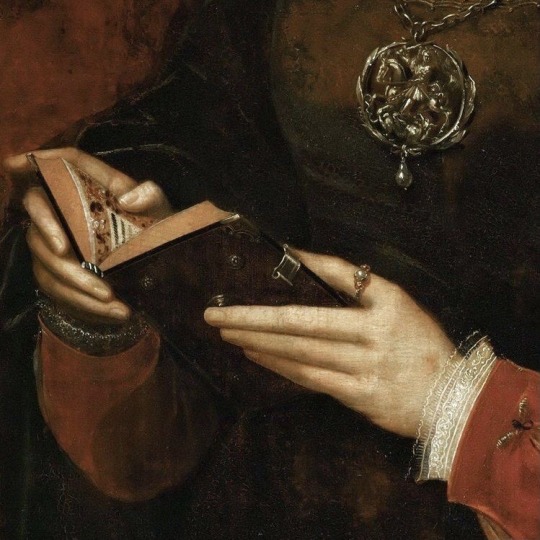
Details, books in paintings by various artists (1), (2), (3)
#art history#oil painting#renaissance#16th century#17th century#dark academia#art academia#academia aesthetic#darkest academia#literature#dark academia aesthetic#dark academia art#renaissance art#late renaissance
275 notes
·
View notes
Text
youtube
Duarte Lobo (c.1565-1646) - Audivi vocem de caelo
Les Voix Animées :
Camille Joutard, soprano Anne-Claire Baconnais, soprano Jérôme Vavasseur, contre-ténor Raphaël Pongy, contre-ténor Damien Roquetty, ténor Luc Coadou, basse et direction musicale
6 notes
·
View notes
Text

"Pained Madonna"
Plautilla Nelli
#Pained Madonna#Plautilla Nelli#female artist#art history#religious painting#mannerism#late renaissance
18 notes
·
View notes